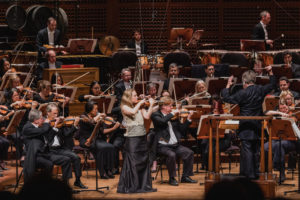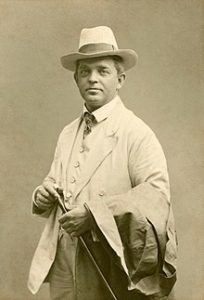The San Francisco Symphony’s audience had an exciting encounter with Music Director Designate Esa-Pekka Salonen on Thursday, February 27. The program included Beethoven’s Overture to King Stephen, Opus 117 (1811); Salonen’s own Violin Concerto (2009); Carl Nielsen’s Symphony No. 5, Opus 50 (1922). Repeated on the 28th and 29th, the program presented three big works each of which had muscular qualities that shook up classical expectations.
 Ludwig Van Beethoven (1770-1827)
Ludwig Van Beethoven (1770-1827)
Beethoven wrote Overture to King Stephen for a play by a German playwright, August von Kotzbue. The playwright was also a lawyer and journalist who was assassinated by a theology student who accused him of being a spy for the Russians. King Stephen is considered the founder of modern Hungary, late 10th to early 11th century. The reader may be excused if unfamiliar with the play; it is known mostly for what Beethoven created for it. It is an unusual piece of music. There are dramatic, long rests. There are themes that grow from Hungarian dances. There is intriguing syncopation, a rhythmic motivation for Hungarian dance. In addition to being completely different all on its own, Overture to King Stephen, written more than ten years before the Ninth Symphony, seems to offer musical predictions of what will come. There is even a theme suggestive of the Ode to Joy. Like the other selections on the program and befitting for the Overture of a play, this work presents a sense of drama that captures the imagination.

Violinist Leila Josefowicz performs Esa-Pekka Salonen’s Violin Concerto with the San Francisco Symphony and Salonen conducting, February 27, 2020 at Davies Symphony Hall
Maestro Salonen composed his Violin Concerto for Ms Leila Josefowicz. A much honored artist, to say she is a dynamic performer is an understatement. The Concerto begins with nearly violent bowing which quickly repeats many times the same sounds. The qualities expressed by the work shift from orchestra section to section, sometimes led by the orchestra and sometimes by the violin, but the violin still dominates. In addition to being a master work for orchestra and soloist, it is an Olympic event of the physicality of making music. In its slow movement, the colors flow through the orchestra while a timpani insists on maintaining its beat. “I decided to cover as wide a range of expression as I could imagine over the four movements of the concerto: from the virtuosic and flashy to the aggressive and brutal, from the meditative and static to the nostalgic and autumnal,” says Esa-Pekka Salonen of his Violin Concerto. Surely its energy punches the music forward. There is a barely restrained explosion which is anticipated but still shocks with its sudden presence. Salonen’s Concerto is disruptive of form and style. Written for the classical orchestra, it takes the possible sounds, shakes them, steps out of line, and makes its own dance. It is not a shy, introspective dance. It is out there, in the open, daring but not especially caring if anyone else takes the dare. The San Francisco Symphony seemed to revel in it.
Danish composer Carl Nielsen began life in a large, poor family. He discovered music on his own at age three. He found that he could get different pitches from the sticks in the woodpile depending on their length and thickness. Throughout his life, he explored music from its most basic sources to the grandeur of his symphonies. A scholarship to the Copenhagen Conservatory to study piano and violin began his understanding of music theory. He supported himself by performing violin and conducting in orchestras in the Tivoli Gardens, the Royal Chapel, the Royal Theater, Copenhagen Music Society, and Music Society Orchestra in Gothenburg, Sweden. His Symphony No. 5 is fantastically interesting and also dramatic. At first the music is anxious, and the anxiety is contagious to those who listen. The adagio is sensual and creamy. It is dangerous to get caught up in the adagio because the timpani will interrupt. In Nielsen’s symphonies there is a feeling of the confrontation of different poles, different energies combat for space. There may be a peace negotiation, but neither side will give in. A gift to his audience: after the changes of key alter our focus, the music rewards us by nodding, “yes.”
This was a triumphant program for both the SFS and its future Music Director. Watching them work together is thrilling.
Photo of San Francisco Symphony, Leila Josefowicz, Esa-Pekka Salonen conducting by Brandon Patoc, courtesy of the San Francisco Symphony.
